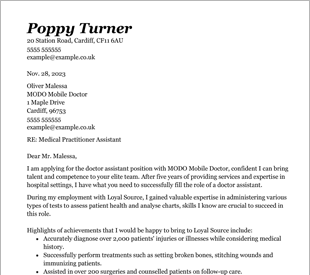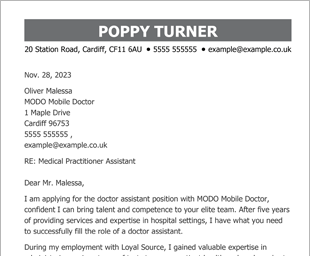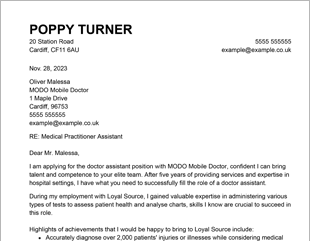Letter of Intent vs. Cover Letter
A cover letter and a letter of intent might appear to be the same, but here are the important differences between a cover letter and letter of intent in a job application.
A cover letter and a letter of intent might appear to be the same, but here are the important differences between a cover letter and letter of intent in a job application.





OUR USERS HAVE BEEN HIRED BY
When you are looking to break the ice with hiring managers and begin a new job search, a great letter of intent or cover letter can be a wonderful way to make connections and open doors. But it’s important to know when each kind of letter is appropriate. Understanding the difference between a letter of intent and a cover letter is fundamental. This article will clearly explain the differences and similarities.
A letter of intent (LOI) is a professional document that declares interest or a preliminary commitment of one party to do business with another. This is a broad definition, of course, because letters of intent can be used in several situations. A letter of intent is useful:
You may also receive a letter of intent from an academic institution, bank, or business before they finalise their decision to do business with you. When a potential employer sends you a letter of intent, it may be because they are interested in hiring you, but have several roles open and are unsure of where they wish to place you.
Letters of intent are broader
While cover letters are useful but narrow documents that are intended to shed light on your years of experience to gain a specific job, letters of intent are broad documents that make first contact to open a dialogue. Of course, both documents should ideally lead to follow-up discussions, but letters of intent are designed to seek a broader range of outcomes, whereas a cover letter has a singular goal.
A letter of intent (LOI) can help you to catch a hiring manager’s eye and build a relationship before there is a firm job posting available. Most available jobs are not publicly advertised on job sites, and many are filled as a result of professional and personal networks. A letter of intent could help you gain access to the opportunities that don’t make it to job sites.
There are many similarities between a letter of intent and a cover letter, but there is one key difference. A letter of intent can be sent when there is no specific job listing. This means it can be used in a unique way, as part of a proactive job search. By sending a letter of interest or intent along with a CV to a company you wish to work with, you stand a chance of being contacted when a space does open up. Writing a cover letter requires more discussion of your professional experience and achievements. In short, a letter of intent is about the future, while a cover letter showcases your past. Remember that both documents should include personalised salutations and address the hiring manager directly.
If you want to create a unique and eye-catching cover letter, then you should not just consider looking at cover letter examples for inspiration. If you want to get started right away you can utilise the free cover letter templates available via the CVHelp cover letter builder.
We personalize your experience.
We use cookies in our website to ensure we give you the best experience, get to know our users and deliver better marketing. For this purpose, we may share the information collected with third parties. By clicking “Allow cookies” you give us your consent to use all cookies. If you prefer to manage your cookies click on the “Manage cookies” link below.